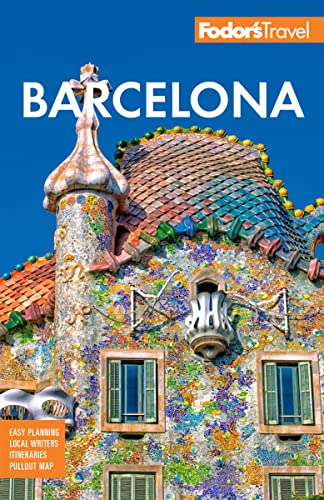Barcelona Itineraries
Ciutat Vella, Quintessential Barcelona
Stroll La Rambla and see the colorful Boqueria market before cutting over to the Catedral de la Seu in Barri Gòtic, unrivaled for its medieval buildings and monuments. Detour through stately Plaça Sant Jaume where the Palau de la Generalitat, Catalonia’s seat of government, faces the Ayuntamiento (City Hall). The Gothic Plaça del Rei and the neoclassical Plaça Reial are short walks from Plaça Sant Jaume. The Museu Picasso is five minutes from the loveliest example of Catalan Gothic architecture, the basilica of Santa Maria del Mar. An evening concert at the Palau de la Música Catalana after a few tapas is an unbeatable way to end the day.
Budget a whole day for the Raval, behind the Boqueria, for the Museu d’Art Contemporani de Barcelona, the medieval Antic Hospital de la Santa Creu, the Sant Pau del Camp church, and the medieval shipyards at Drassanes Reiales. Palau Güell, just off the lower Rambla, is an important Gaudí work. Nearby, the waterfront Barceloneta neighborhood is a prime venue for a paella.
The Post-1860 Checkerboard Eixample
A day touring the Eixample starts early and begins at Gaudí’s magnum opus, the Temple Expiatori de la Sagrada Família (while there, include a side trip up Avinguda Gaudí to the Hospital de Sant Pau); if you buy your tickets ahead of time, you can avoid the lengthy queue. After, head to the central Passeig de Gràcia; en route swing past Moderniste architect Puig i Cadafalch’s Casa Terrades and his Palau Baró de Quadras. Spend the afternoon in the Eixample with the undulating facades of Casa Milà and Casa Batlló. Other masterpieces include Gaudí’s Casa Calvet, not far from Plaça de Catalunya, the Fundació Tàpies, and more far-flung gems such as the Casa Golferichs, and the Casa de la Papallona (the "Butterfly House") out toward Plaça de Espanya. Parallel to the Passeig de Gràcia is the Rambla Catalunya, a tree-shaded promenade lined with shops and cafés.
Upper Barcelona: Gràcia and Sarrià
For a more restful excursion, try the formerly outlying towns of Gràcia and Sarrià. Gràcia is home to Gaudí’s first private residential commission, Casa Vicens, and his playful Park Güell above Plaça Lesseps; the tree-lined lower reaches of this bustling neighborhood are filled with houses by Gaudí’s right-hand man, Francesc Berenguer. Sarrià is a village long since absorbed by the city, an intimate warren of narrow streets, small shops, and restaurants. A bit removed from the village itself are the Monestir de Pedralbes, with its superb Gothic cloister, Gaudí’s Torre Bellesguard, and his Col·legi de les Teresianes (a convent school, not open to the public).
Art in Montjuïc
Montjuïc is home to the Museu Nacional d’Art de Catalunya; the nearby Fundació Miró features Catalan artist Joan Miró’s colorful paintings and textiles and a stellar Calder mobile. Down the stairs toward Plaça d'Espanya are the Mies van der Rohe Barcelona Pavilion and the restored Casaramona textile mill, now the CaixaForum cultural center and gallery.




